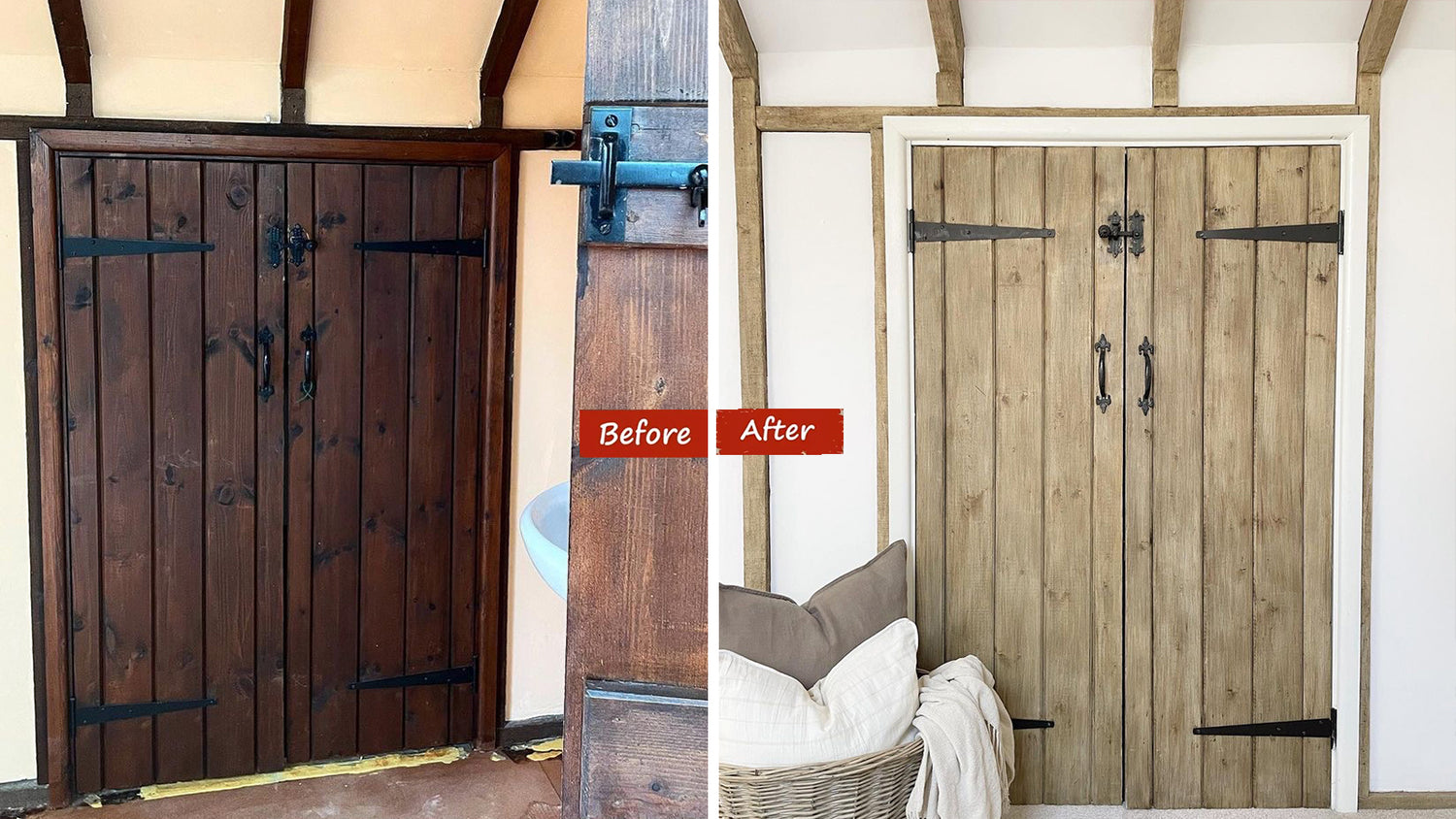Key FAQ Points:
- The ‘Frenchic Beam Hack’ was originally developed to produce a light oak look for ceiling beams using Frenchic products.
- The technique is most effective on surfaces that have texture, which is highlighted and defined by the Browning Wax.
- You can use the Frenchic Beam Hack on more than just ceiling beams, but there are things to consider.
- Maintaining this look in high-traffic areas typically requires some up-keep.
---
The ‘Frenchic Beam Hack’ was originally developed to produce a light oak look for ceiling beams using Frenchic products. First, the surface is painted with Lazy Range Crème de la Crème and then Browning Wax applied. It allows a total transformation of dark or previously painted beams without the requirement for costly, messy and time-consuming stripping or sand blasting.
The technique is most effective on surfaces that have texture, which is highlighted and defined by the Browning Wax. That creates the natural wood effect – our video shows you some ways of creating texture to make the most of this look. As ceiling beams are not generally subject to wear and tear, the wax can be quite heavily applied, enhancing the tonal wood effect.
Over time, customers have begun to experiment by using the same procedure on other areas around the home. This includes interior woodwork of all kinds – doors, windowsills and even bannisters.
However, using the beam hack technique to create a natural oak look on surfaces like these, which are often smooth, is a different process to regular painting and takes a little more time and effort. In addition, regular maintenance is likely to be required over time, particularly in high traffic areas. It is always worth trying a test patch if you can, to see if this technique is suitable for your particular intended project.
Here are some tips and tricks for best results…
The basics with preparation
The Beam Hack involves painting a base of Lazy Range Crème de la Crème then applying Browning Wax over the top.
Prepare your surface for painting as recommended for all projects. Clean with sugar soap, rinse and allow to dry before lightly sanding to ensure a good ‘key’ for the paint.
Creating texture with paint
If the surface you want to tackle has some wood texture, then this is a good start, as smooth surfaces don’t provide a good base. This is because Browning Wax works best by highlighting texture (rather than creating the texture itself). The more texture your surface has to begin with, the better the wood effect once the wax is applied.
One of the simplest ways to create surface texture is to over-work paint as you apply it. Have a little more paint than usual on your brush and run it along the length of the surface (following the way wood grain would run). Keep brushing backwards and forwards as it begins to dry to cause pronounced brush marks.
In addition, you could also consider using a graining tool to create texture and patterns in the paint, ready for the Browning Wax to highlight. Allow your paint to dry before applying the wax.
To add really dramatic texture, check out the video below:
Wax application
Wax is durable when applied according to the instructions on the tin. Areas where wax is too heavily applied are more susceptible to wear and, in some circumstances, may even remain tacky and prone to transfer.
To avoid this, apply the Browning Wax with a wax brush or sponge and ensure you remove the excess with a lint-free cloth before allowing the surface to dry. For a darker effect, apply a second coat of wax once the first has dried. For more on wax application, check out our dedicated video on the subject.
Buff the waxed surface after it has dried. This creates a smoother finish, which is less susceptible to physical wear. If you apply too much wax and do not remove the excess or buff, the finished coat is unlikely to be durable.
Aftercare for waxed surfaces
To clean a waxed surface, avoid scrubbing or using harsh, abrasive or heavy-duty cleaning products. A soft, damp (not wet) cloth and mild detergent is recommended.
Be aware that regular maintenance of the waxed surface is likely to be required in high traffic areas, especially bannisters and newel posts.
Tackling beams that are not wood
This hack provided excellent results on wooden beams, but what if they're made from another material - like steel or plaster beams? Watch as Frenchic Fan Melissa (over at @___makingahouseahome) transforms a plasterboard steel beam into a rustic faux wooden beam with this easy hack!
Alternatives to the Frenchic Beam Hack
Wax does not harden in the same way or to the same extent as paint and other types of top coats. As such, it’s important to consider how practical or suitable it is to use the beam hack technique in areas of high traffic or heavy use/wear.
Fortunately, it’s possible to achieve a very hard wearing, natural wood look using other techniques. For example, you can apply a combination of paint colours with light and darker browns, using techniques like dry brushing, blending and over working the paint. Then, apply a hard wearing top coat like Tuff Top Coat for a matte finish or Finishing Coat for a subtle satin sheen.
Check out this reel by influencer, Abi Hugo (@thewhitethistle) for a good intro to this:








